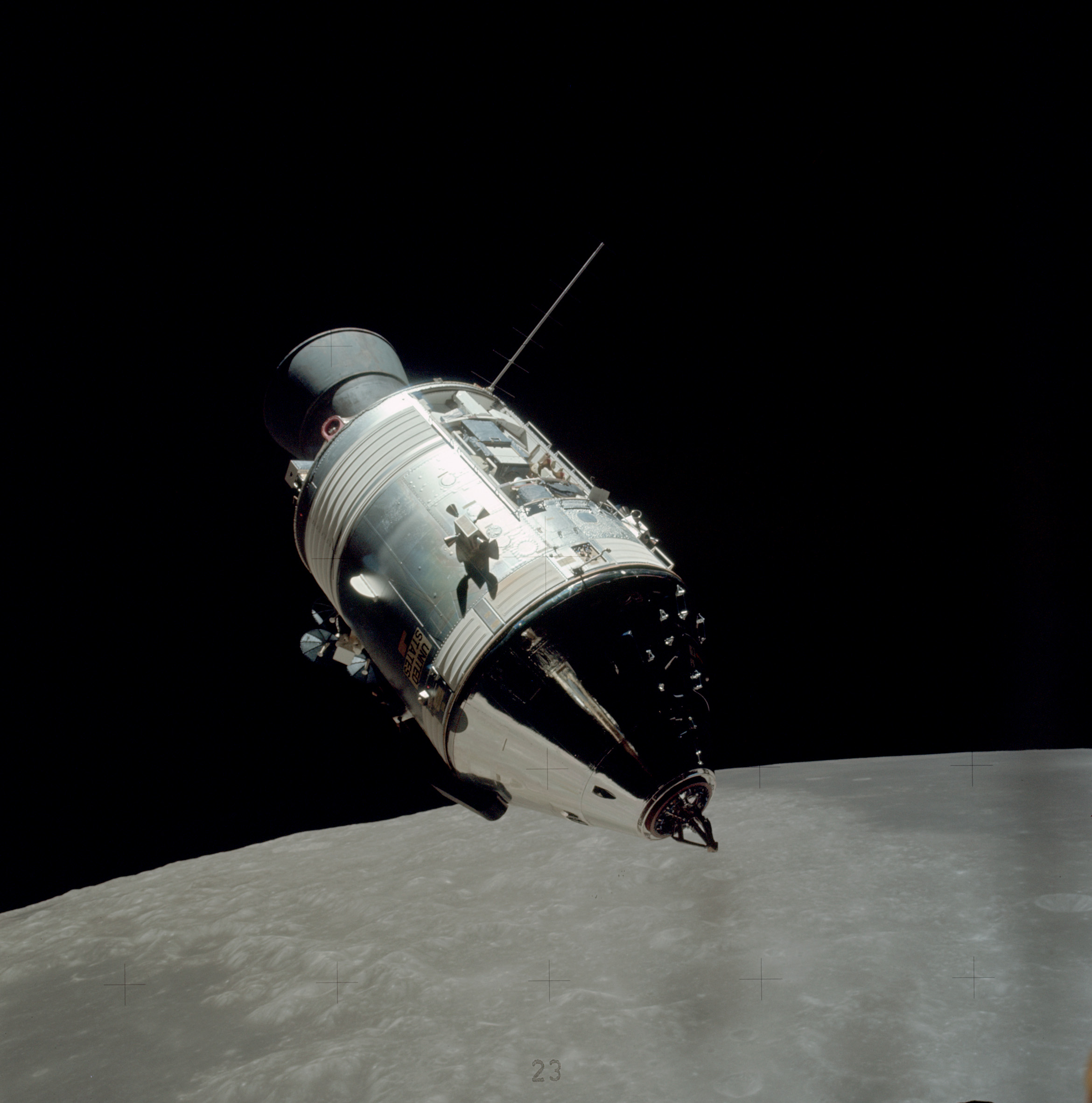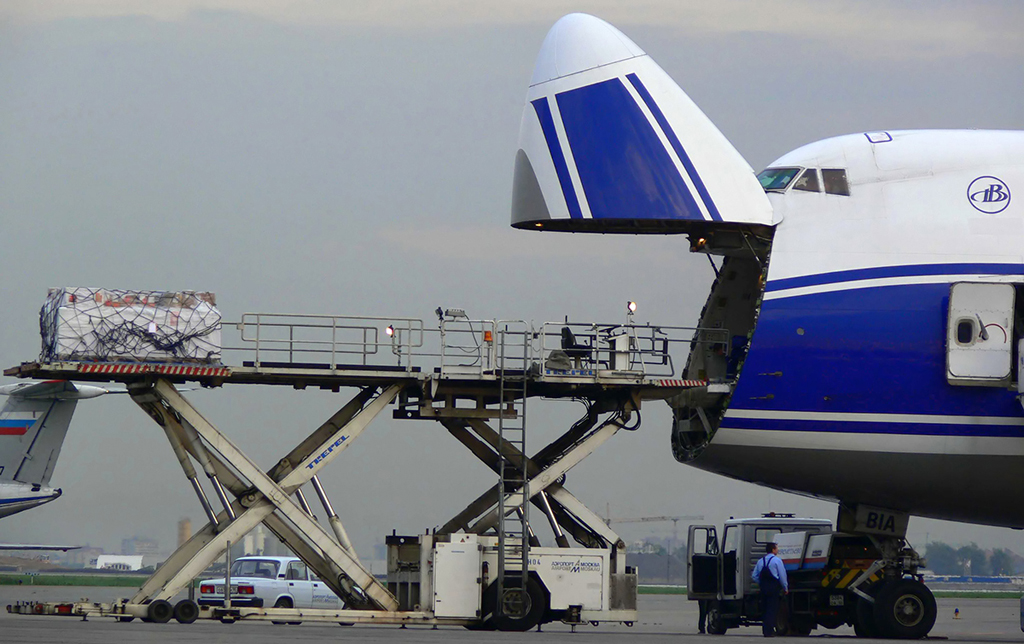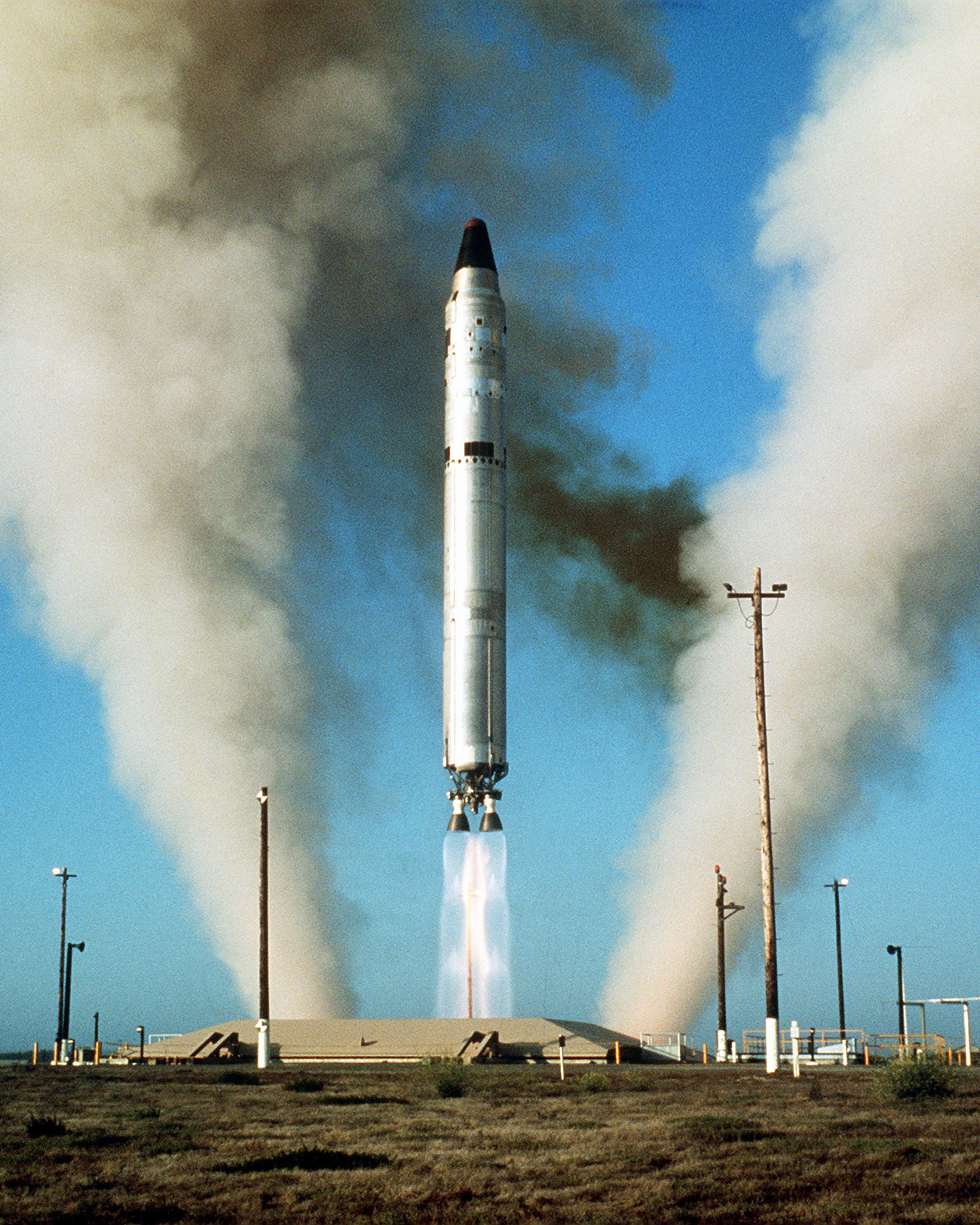|
Paul Blasingame
Benjamin Paul Blasingame (1 August 1919 – 13 November 2015) was a United States Air Force (USAF) officer and engineer who played an important role in the development of the Intercontinental Ballistic Missile (ICBM) and inertial navigation systems. A 1940 graduate of Pennsylvania State College, he served with the United States Army Signal Corps during World War II. After the war he transferred to the USAF and earned a Doctor of Science degree at the Massachusetts Institute of Technology's Instrumentation Laboratory in 1950. In 1954 he was selected by Colonel Bernard A. Schriever to join the Western Development Division, which oversaw its development of the Atlas ICBM. As the Chief Guidance and Control Project Officer, Blasingame advocated the use of inertial navigation systems in ICBMs, He was the manager of the HGM-25A Titan I ICBM project from 1956 to 1958, and the first head of the department of astronautics at the United States Air Force Academy from 1958 to 1 ... [...More Info...] [...Related Items...] OR: [Wikipedia] [Google] [Baidu] |
State College, Pennsylvania
State College is a home rule municipality in Centre County in the Commonwealth of Pennsylvania. It is a college town, dominated economically, culturally and demographically by the presence of the University Park campus of the Pennsylvania State University (Penn State). State College is the largest designated borough in Pennsylvania. It is the principal borough of the six municipalities that make up the State College area, the largest settlement in Centre County and one of the principal cities of the greater State College-DuBois Combined Statistical Area with a combined population of 236,577 as of the 2010 U.S. census. In the 2010 census, the borough population was 42,034 with approximately 105,000 living in the borough plus the surrounding townships often referred to locally as the "Centre Region". Many of these Centre Region communities also carry a "State College, PA" address although they are not part of the borough of State College. "Happy Valley" and "Lion Country" are ... [...More Info...] [...Related Items...] OR: [Wikipedia] [Google] [Baidu] |
Draper Laboratory
Draper Laboratory is an American non-profit research and development organization, headquartered in Cambridge, Massachusetts; its official name is The Charles Stark Draper Laboratory, Inc (sometimes abbreviated as CSDL). The laboratory specializes in the design, development, and deployment of advanced technology solutions to problems in national security, space exploration, health care and energy. The laboratory was founded in 1932 by Charles Stark Draper at the Massachusetts Institute of Technology (MIT) to develop aeronautical instrumentation, and came to be called the MIT Instrumentation Laboratory. During this period the laboratory is best known for developing the Apollo Guidance Computer, the first silicon integrated circuit based computer. It was renamed for its founder in 1970, and separated from MIT in 1973 to become an independent, non-profit organization. The expertise of the laboratory staff includes the areas of guidance, navigation, and control technologies and sys ... [...More Info...] [...Related Items...] OR: [Wikipedia] [Google] [Baidu] |
Apollo Spacecraft
The Apollo spacecraft was composed of three parts designed to accomplish the American Apollo program's goal of landing astronauts on the Moon by the end of the 1960s and returning them safely to Earth. The expendable (single-use) spacecraft consisted of a combined command and service module (CSM) and an Apollo Lunar Module (LM). Two additional components complemented the spacecraft stack for space vehicle assembly: a spacecraft–LM adapter (SLA) designed to shield the LM from the aerodynamic stress of launch and to connect the CSM to the Saturn launch vehicle and a launch escape system (LES) to carry the crew in the command module safely away from the launch vehicle in the event of a launch emergency. The design was based on the lunar orbit rendezvous approach: two docked spacecraft were sent to the Moon and went into lunar orbit. While the LM separated and landed, the CSM remained in orbit. After the lunar excursion, the two craft rendezvoused and docked in lunar orbit ... [...More Info...] [...Related Items...] OR: [Wikipedia] [Google] [Baidu] |
KC-135
The Boeing KC-135 Stratotanker is an American military aerial refueling aircraft that was developed from the Boeing 367-80 prototype, alongside the Boeing 707 airliner. It is the predominant variant of the C-135 Stratolifter family of transport aircraft. The KC-135 was the United States Air Force's first jet-powered refueling tanker and replaced the KC-97 Stratofreighter. The KC-135 was initially tasked with refueling strategic bombers, but it was used extensively in the Vietnam War and later conflicts such as Operation Desert Storm to extend the range and endurance of US tactical fighters and bombers. The KC-135 entered service with the United States Air Force (USAF) in 1957; it is one of nine military fixed-wing aircraft with over 60 years of continuous service with its original operator. The KC-135 is supplemented by the larger McDonnell Douglas KC-10 Extender. Studies have concluded that many of the aircraft could be flown until 2030, although maintenance costs have grea ... [...More Info...] [...Related Items...] OR: [Wikipedia] [Google] [Baidu] |
C-141 Starlifter
The Lockheed C-141 Starlifter is a retired military strategic airlifter that served with the Military Air Transport Service (MATS), its successor organization the Military Airlift Command (MAC), and finally the Air Mobility Command (AMC) of the United States Air Force (USAF). The aircraft also served with airlift and air mobility wings of the Air Force Reserve (AFRES), later renamed Air Force Reserve Command (AFRC), the Air National Guard (ANG) and, later, one air mobility wing of the Air Education and Training Command (AETC) dedicated to C-141, C-5, C-17 and KC-135 training. Introduced to replace slower propeller driven cargo planes such as the Douglas C-124 Globemaster II and Douglas C-133 Cargomaster, the C-141 was designed to requirements set in 1960 and first flew in 1963. Production deliveries of an eventual 285 planes began in 1965: 284 for the USAF, and a company demonstrator later delivered to National Aeronautics and Space Administration (NASA) for use as an ai ... [...More Info...] [...Related Items...] OR: [Wikipedia] [Google] [Baidu] |
C-5A Galaxy
The Lockheed C-5 Galaxy is a large military transport aircraft designed and built by Lockheed Corporation, Lockheed, and now maintained and upgraded by its successor, Lockheed Martin. It provides the United States Air Force (USAF) with a heavy intercontinental-range strategic airlift capability, one that can carry outsize cargo, outsized and oversized loads, including all air-certifiable cargo. The Galaxy has many similarities to the smaller Lockheed C-141 Starlifter and the later Boeing C-17 Globemaster III. The C-5 is among the List of large aircraft#Military, largest military aircraft in the world. The C-5 Galaxy's development was complicated, including significant cost overruns, and Lockheed suffered significant financial difficulties. Shortly after entering service, cracks in the wings of many aircraft were discovered and the C-5 fleet was restricted in capability until corrective work was completed. The C-5M Super Galaxy is an upgraded version with new engines and moderniz ... [...More Info...] [...Related Items...] OR: [Wikipedia] [Google] [Baidu] |
Boeing 747
The Boeing 747 is a large, long-range wide-body airliner designed and manufactured by Boeing Commercial Airplanes in the United States between 1968 and 2022. After introducing the 707 in October 1958, Pan Am wanted a jet times its size, to reduce its seat cost by 30%. In 1965, Joe Sutter left the 737 development program to design the 747, the first twin-aisle airliner. In April 1966, Pan Am ordered 25 Boeing 747-100 aircraft and in late 1966, Pratt & Whitney agreed to develop the JT9D engine, a high-bypass turbofan. On September 30, 1968, the first 747 was rolled out of the custom-built Everett Plant, the world's largest building by volume. The first flight took place on February 9, 1969, and the 747 was certified in December of that year. It entered service with Pan Am on January 22, 1970. The 747 was the first airplane dubbed "Jumbo Jet", the first wide-body airliner. The 747 is a four-engined jet aircraft, initially powered by Pratt & Whitney JT9D turbofan engin ... [...More Info...] [...Related Items...] OR: [Wikipedia] [Google] [Baidu] |
Delco Carousel
The Delco Carousel — proper name Carousel IV — was an inertial navigation system (INS) for aircraft developed by Delco Electronics. Before the advent of sophisticated flight management systems, Carousel IV allowed pilots to automate navigation of an aircraft along a series of waypoints that they entered via a control console in the cockpit. Carousel IV consisted of an inertial measurement unit (IMU) as its position reference, a digital computer to compute the navigation solution, and a control panel mounted in an aircraft's cockpit. It was used for long over water and over the North Pole aircraft navigation. Many aircraft were equipped with dual or triple Carousels for redundancy. Operation was relatively simple: a pilot or flight engineer would enter the individual waypoints by their latitude and longitude points and then the pilot or engineer would enter the starting location in latitude and longitude. The system used spinning mass gyroscopes and proof-mass accelerometers to ... [...More Info...] [...Related Items...] OR: [Wikipedia] [Google] [Baidu] |
LGM-25C Titan II
The Titan II was an intercontinental ballistic missile (ICBM) developed by the Glenn L. Martin Company from the earlier Titan I missile. Titan II was originally designed and used as an ICBM, but was later adapted as a medium-lift space launch vehicle (these adaptations were designated Titan II GLV and Titan 23G) to carry payloads to Earth orbit for the United States Air Force (USAF), National Aeronautics and Space Administration (NASA) and National Oceanic and Atmospheric Administration (NOAA). Those payloads included the USAF Defense Meteorological Satellite Program (DMSP), NOAA weather satellites, and NASA's Gemini crewed space capsules. The modified Titan II SLVs (Space Launch Vehicles) were launched from Vandenberg Air Force Base, California, up until 2003. Titan II missile The Titan II ICBM was the successor to the Titan I, with double the payload. Unlike the Titan I, it used hydrazine-based hypergolic propellant which was storable and reliably ignited. This red ... [...More Info...] [...Related Items...] OR: [Wikipedia] [Google] [Baidu] |
AC Spark Plug
ACDelco is an American automotive parts brand owned by General Motors (GM). Factory parts for vehicles manufactured by GM are consolidated under the ACDelco brand, which also offers aftermarket parts for non-GM vehicles. Over its long history it has been known by various names such as United Motors Corporation, United Motors Service, and United Delco. The brand "ACDelco" should not be confused with GM's former AC Delco Systems, formed in 1994 from the merger of AC Rochester Division and Delco Remy Division. In 1995 Delphi Automotive Systems absorbed AC Delco Systems. History United Motors Corporation was formed by William C. Durant in 1916 as an automotive component and accessory holding company. Durant was the owner of Buick and founder of General Motors in 1908. After he lost control of General Motors in 1910, he founded Chevrolet in 1911 with Louis Chevrolet and the profits from this permitted him to regain control of GM in 1916. At approximately the same time, he assembled ... [...More Info...] [...Related Items...] OR: [Wikipedia] [Google] [Baidu] |
United States Air Force Academy
The United States Air Force Academy (USAFA) is a United States service academy in El Paso County, Colorado, immediately north of Colorado Springs. It educates cadets for service in the officer corps of the United States Air Force and United States Space Force. It is the youngest of the five service academies, having graduated its first class in 1959, but is the third in seniority. Graduates of the academy's four-year program receive a Bachelor of Science degree and are commissioned as second lieutenants in the U.S. Air Force or U.S. Space Force. The academy is also one of the largest tourist attractions in Colorado, attracting approximately a million visitors each year. Admission is highly competitive, with nominations divided equally among Congressional districts. Recent incoming classes have had about 1,200 cadets; since 2012, around 20% of each incoming class does not graduate. During their tenure at the Academy, cadets receive tuition, room and board, and a monthly ... [...More Info...] [...Related Items...] OR: [Wikipedia] [Google] [Baidu] |
HGM-25A Titan I
The Martin Marietta SM-68A/HGM-25A Titan I was the United States' first multistage intercontinental ballistic missile (ICBM), in use from 1959 until 1962. Though the SM-68A was operational for only three years, it spawned numerous follow-on models that were a part of the U.S. arsenal and space launch capability. The Titan I was unique among the Titan models in that it used liquid oxygen and RP-1 as propellants; all subsequent versions used storable propellants instead. Originally designed as a backup in case the U.S. Air Force's SM-65 Atlas missile development ran into problems, the Titan was ultimately beaten into service by Atlas. Deployment went ahead anyway to more rapidly increase the number of missiles on alert and because the Titan's missile silo basing was more survivable than Atlas. The succeeding LGM-25C Titan II served in the U.S. nuclear deterrent until 1987 and had increased capacity and range in addition to the different propellants. History By January 1955, th ... [...More Info...] [...Related Items...] OR: [Wikipedia] [Google] [Baidu] |









